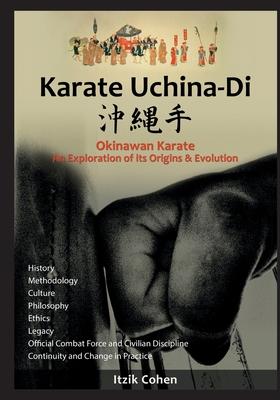Exploring the deep roots of Okinawan karate, analyzing its attitude and gradual techniques development before the 20th century. Revealing important cross currents in the evolution of Okinawan karate and its ancestor, Ryukyu-di.
Part 1 defines the background and the historical field in which karate developed.
Part 2 elaborates on the issues discussed in part 1 and thoroughly investigates changes, trends and stages of progress that have been influential in bringing Karate into the 20th century.
Deep examine of the relationships between Okinawan-te and the Chinese, Japanese and even Siamese environments provide an insight on ancient karate in the context of combat on the timeline. It advances the discussion of significant topics such as the "Bubishi" and "White Crane" and analyzes the subject of "Shaolin Monastery Combat" thoroughly, as well as its relationship with Chinese Martial Arts and Ryukyuan bare-hand combat.
The nature of transferring knowledge throughout history.
The components of kihon and kata, its role and its fundamental practical importance.
What did "Ryukyuan-di" look like?
Find the thorough answers to many ambiguous issues and topics.
Learn the little-known about the origin of authentic Karate.
Understand key points in karate evolution.
The extensive quantity of material is supported by references to historical sources that are examined carefully and in accordance with their relevance and reliability.
The book traces and defines the characteristics of those who engaged in ancient Ryukyuan bare-hand combat, their skills, the nature of their activities and the development of "Ryukyuan-di', which became known as "Okinawan-te", and then later became known as 'Karate".
The author brings to his research a combination of knowledge and experience in the military framework as infantry combatant, and an intelligence researcher of terrorism arena, with his profession in the field of software engineering and of course his rich experience in martial arts, self-defence and military close combat. In this book, the author weaved together the fabric holding together karate and kobudo, along with its personalities, military, social, spiritual, religious and cultural environments and significant cross sections, that shaped karate evolution.